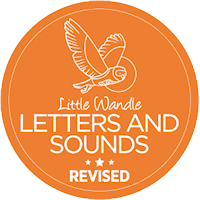Curriculum
Curriculum Overview
For more detailed information on what the children will be learning each half term, see the Curriculum Overviews on their respective year group page:
Reading and Phonics - Little Wandle

At St Francis, we believe that all our children can become fluent readers and writers. This is why we teach reading through Little Wandle Letters and Sounds Revised, which is a systematic and synthetic phonics programme.
We start teaching phonics in Nursery and Reception and follow the Little Wandle Letters and Sounds Revised progression, which ensures children build on their growing knowledge of the alphabetic code, mastering phonics to read and spell as they move through school.
We also model the application of the alphabetic code through phonics in shared reading and writing, both inside and outside of the phonics lessons and across the curriculum. We have a strong focus on language development for our children because we know that speaking and listening are crucial skills for reading and writing in all subjects.
Comprehension
At St Francis, we value reading as a crucial life skill. By the time children leave us, our aim is that they read confidently for meaning and regularly enjoy reading for pleasure. Our readers are equipped with the tools to tackle unfamiliar vocabulary. We encourage our children to see themselves as readers for both pleasure and purpose.
Foundations for Phonics in Nursery
We provide a balance of child-led and adult-led experiences for all children that meet the curriculum expectations for ‘Communication and Language’ and ‘Literacy’. These include:
- Sharing high-quality stories and poems,
- Learning a range of nursery rhymes and action rhymes,
- Activities that develop focused listening and attention, including oral blending,
- Attention to high-quality language.
We ensure Nursery children are well prepared to begin learning grapheme-phoneme correspondences (GPCs) and blending in Reception.
Daily Phonics Lessons in Reception and Year 1
We teach phonics for 25 minutes a day. Each Friday, we review the week’s teaching to help children become fluent readers.
We follow the Little Wandle Letters and Sounds Revised expectations of progress:
- Children in Reception are taught to read and spell words using Phase 2 and 3 GPCs, and words with adjacent consonants (Phase 4) with fluency and accuracy.
- Children in Year 1 review Phase 3 and 4 and are taught to read and spell words using Phase 5 GPCs with fluency and accuracy.
Daily keep-up lessons ensure every child learns to read
Any child who needs additional practice has Daily Keep-up support, taught by a fully trained adult.
Keep-up lessons match the structure of class teaching, but in smaller steps with more repetition, so that every child secures their learning.
Teaching Reading: Reading practice sessions three times a week
We teach children to read through reading practice sessions three times a week. These:
- Are taught by a fully trained adult to small groups of approximately six children.
- Use books matched to the children’s secure phonic knowledge using the Little Wandle Letters and Sounds Revised assessments.
Each reading practice session has a clear focus, so that the demands of the session do not overload the children’s working memory. The reading practice sessions have been designed to focus on three key reading skills:
- Decoding,
- Prosody: teaching children to read with understanding and expression,
- Comprehension: teaching children to understand the text.
Children who are not yet decoding have daily additional blending practice in small groups, so that they quickly learn to blend and can begin to read books.
Home Reading
The decodable reading practice book is taken home to ensure success is shared with the family.
Reading for pleasure books also go home for parents to share and read to children.
Ensuring consistency and pace of progress
Every teacher in our school has been trained to teach reading, so we have the same expectations of progress. We all use the same language, routines and resources to teach children to read so that we lower children’s cognitive load.
Weekly content grids map each element of new learning to each day, week and term for the duration of the programme.
Lesson templates, prompt cards and ‘How To’ videos ensure teachers all have a consistent approach and structure for each lesson.
Assessment
Assessment is used to monitor progress and to identify any child needing additional support as soon as they need it.
Assessment for learning is used:
- Daily within class to identify children needing keep-up support,
- Weekly in the review lesson to assess gaps, address these immediately and secure fluency of GPCs, words and spellings.
Summative assessment is used:
- Every half term to assess progress, to identify gaps in learning that need to be addressed, to identify any children needing additional support and to plan the keep-up support that they need.
The Little Wandle Letters and Sounds Revised placement assessment is used:
- With any child new to the school to quickly identify any gaps in their phonic knowledge and plan provide appropriate extra teaching.
Statutory Assessment
Children in Year 1 sit the Phonics screening check. Any child not passing the check re-sits it in Year 2.
Ongoing assessment for catch-up
Children in Year 2 to 6 are assessed through:
- Their teacher’s ongoing formative assessment
- The Little Wandle Letters and Sounds placement assessment
- The appropriate half-termly assessments.
Additional information for parents
More information for parents can be found on the Little Wandle website by following the link below. You can find pronunciation guides as well as information about which sounds your child will be learning and when. You can also find additional information about home reading.